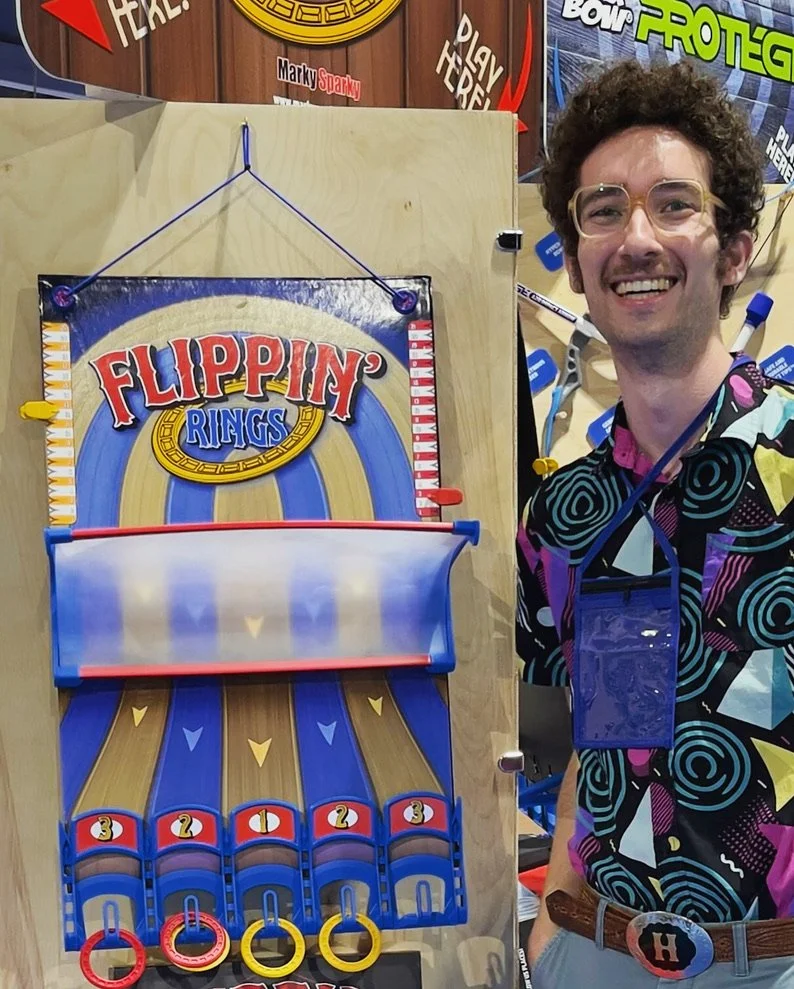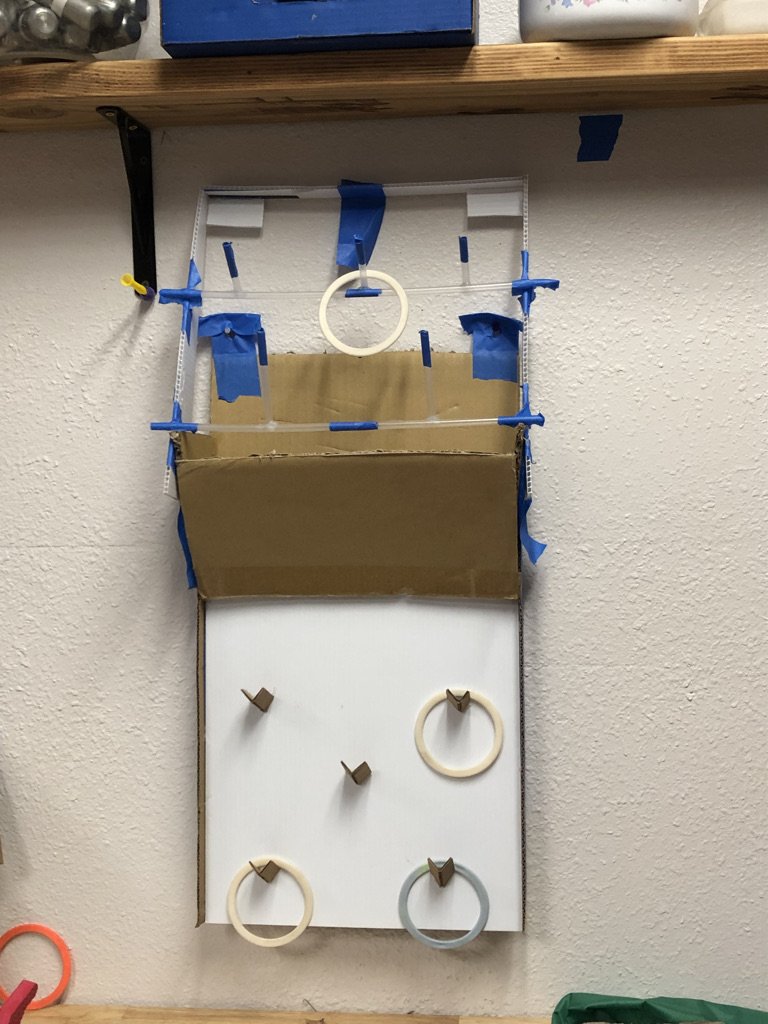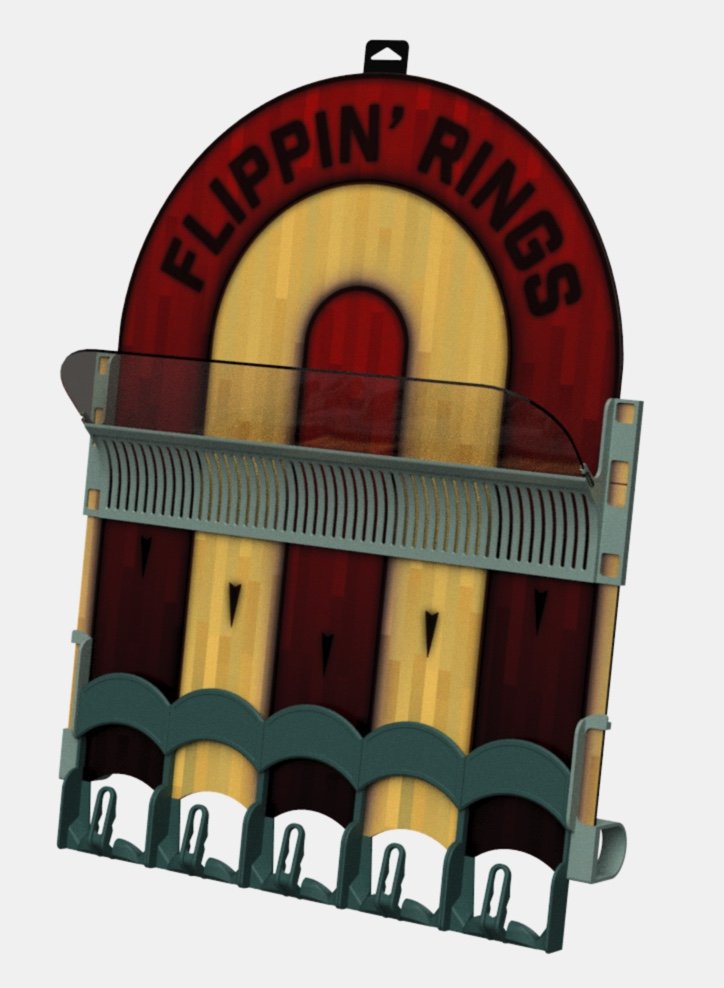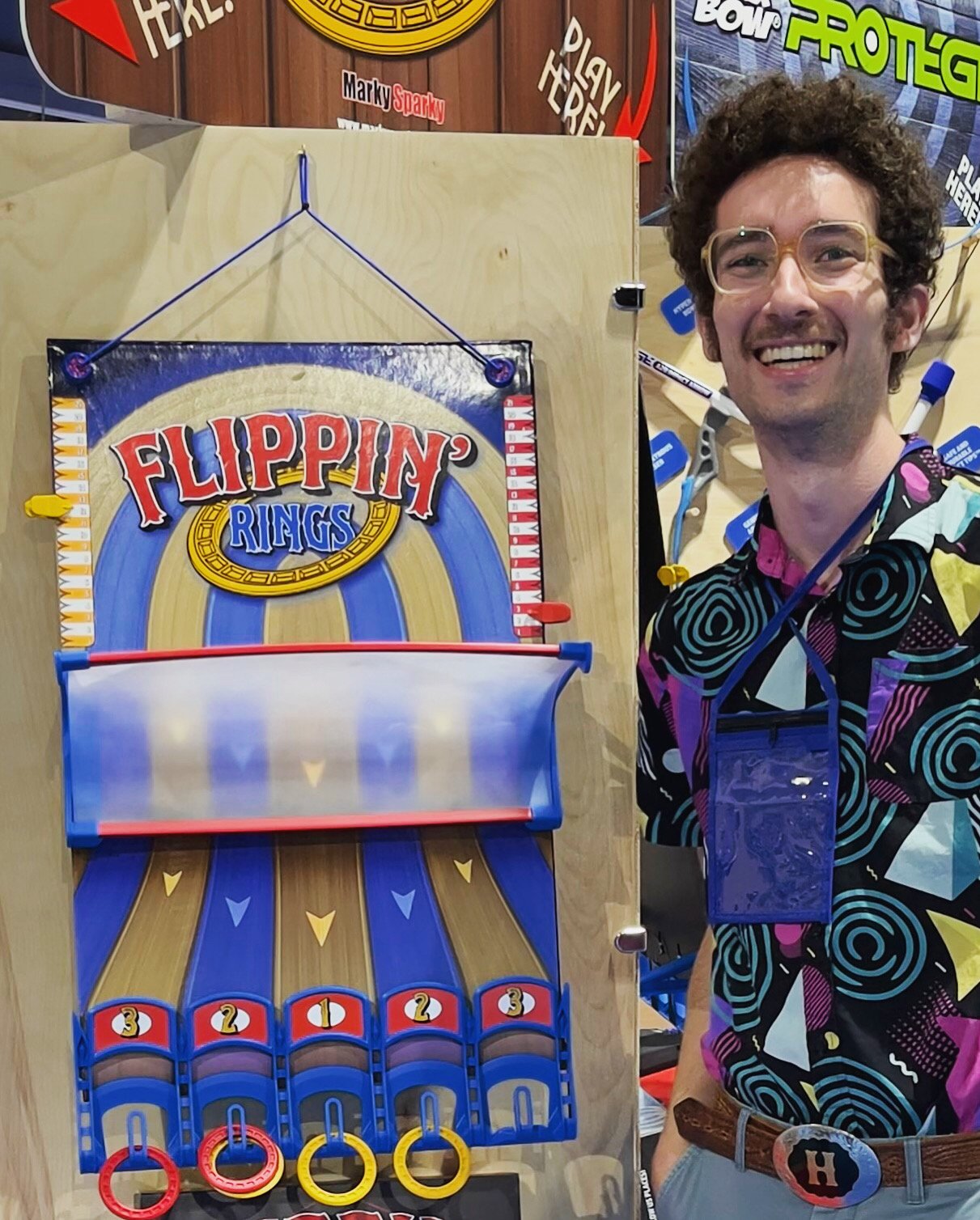Let’s Flip Out
While working as a toy designer at Marky Sparky Toys I got to work on the design and development of a new ring toss product called Flippin’ Rings. This is a brief overview of my experience being a part of the design process.
The Briefing
Wall mounted ring toss is a popular indoor game, but lots of the existing ring toss games on the market have a particular shortcoming — when rings hit the target, they frequently bounce off the target and fall on the floor rather than land on a hook. This is frustrating and not very fun. So the initial briefing for this product was to design a ring toss game where if the airborne ring touches the target, it will not touch the ground.
Research and Development
I started with no idea how to satisfy this design requirement. I knew I couldn’t figure it out in my head or on paper, I had to think with my hands. So I spent about a week building ring and hook designs using simple prototyping materials - cardboard, duct tape, hot glue. I tried magnets, giant hooks, velcro — no idea was off the table. I let the materials inspire me and tried to crank out mockups as quickly as possible, hoping some opportunity would present itself.
Eventually two ideas converged into that opportunity: First, I made a hook target with a bucket underneath it, reasoning that any rings that missed the hooks would fall into the bucket (and not hit the ground). Second, I was thinking about plinko, and imagined treating the ring like a plinko puck. So I glued some carboard pegs to a board and let the ring fall down them…but the ring didn’t bounce off the pegs as expected. Instead, it flipped over them and settled on the peg. That flip was a happy accident and an exciting discovery.
I put a plinko board under my bucket target and had my first functioning prototype to present to the rest of the team. Their verdict: forget the hooks above the bucket, this game was all about the hooks below the bucket.
Prototyping
What followed was an intense prototyping process trying out different hook designs and board configurations. Every variable had to be tested and validated. Changing one small feature could have three unexpected consequences. I took a lot of slow-motion footage of rings flipping over prototype hooks. And slowly a product began to emerge…
As the prototype became more refined I also explored different design aesthetics. Having a final render of what the product was intended to look like was helpful in keeping the end goal in mind.
Handing the Project Off
It was at this stage of development that I left the company and moved to Los Angeles, leaving the project in the incredibly talented hands of my coworkers. They continued developing the product and truly knocked it out of the park. It’s one thing to be me messing around in CAD and hoping something nice comes out. It’s another thing to put the project in the hands of a top-notch industrial designer who really knows what they’re doing, and a graphic designer who knows how to make toys really pop.
I wouldn’t see the product again until I attended the ASTRA Toy Fair in 2022. It turned out pretty flippin’ cool if I say so myself.
Lessons Learned
For those interested in becoming product designers…
As a product designer, you have to find the right balance between trusting your instincts and questioning your assumptions.
Your instincts are your voice as a designer — your aesthetic sensibilities and your general interests. I like kinetic art and marble runs, so it was my instincts that gave me the idea of treating the ring like a plinko puck. Leaning full tilt into your instincts can be incredibly gratifying, but just because you like what you’re making doesn’t mean that anyone else will. A common pitfall — sometimes making something is more fun than using it.
Conversely, your assumptions are your blind spots as a designer — the things you do because that’s just the way you tend to do them, your first draft decisions. These often inform the foundational and invisible elements…why is an object the size it is, why is it the particular shape or form it is. There’s often a better way to do things hiding where the designer hasn’t thought to look. These assumptions should be validated with testing, but the testing needs to be intentional or you’ll get stuck spinning your wheels in the pursuit of “leaving no stone unturned”.
If a designer’s instincts aren’t trusted they will feel no ownership over the thing they are designing, which will suck the heart and soul out of a product. But if a designer is allowed to make a foundation out of their assumptions, their product will be built on shaky ground, and may ultimately collapse. I think Flippin’ Rings arose out of a successful balance between these two ideological forces. I feel really proud of the discoveries and contributions I made to this product, and also was held accountable throughout the process to validate my work through rigorous testing.


















